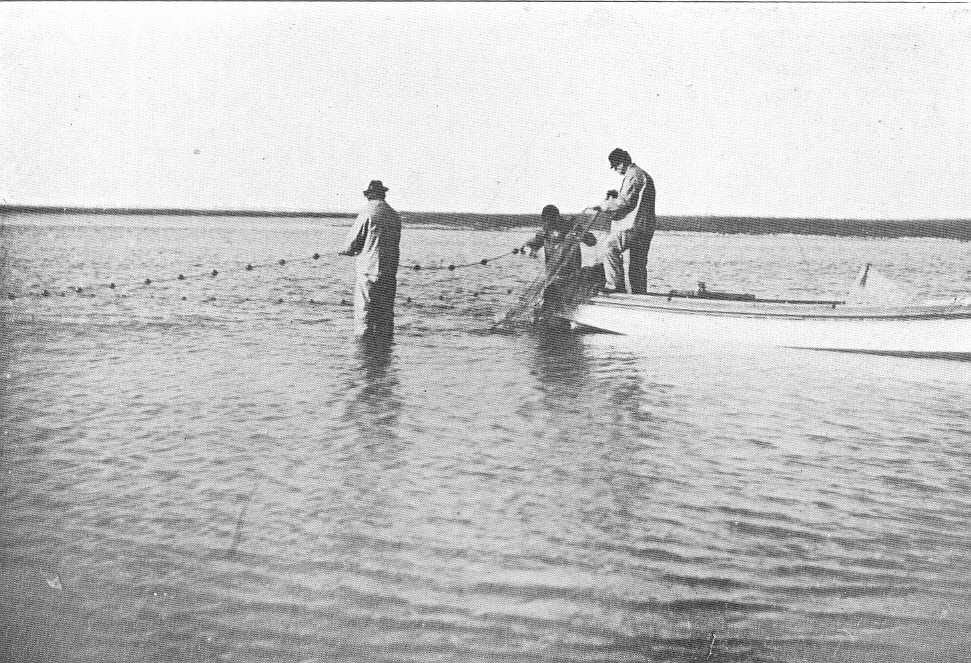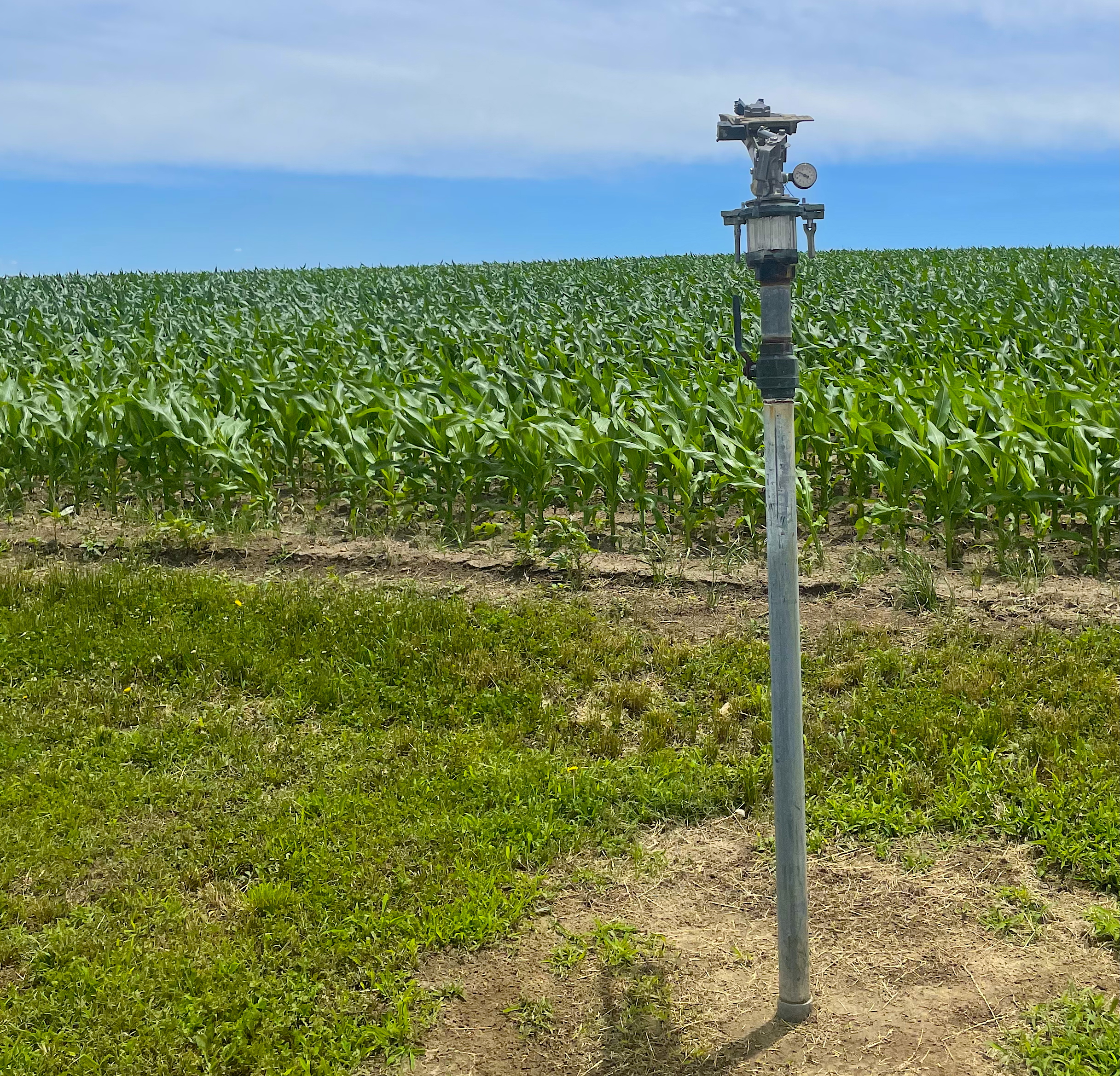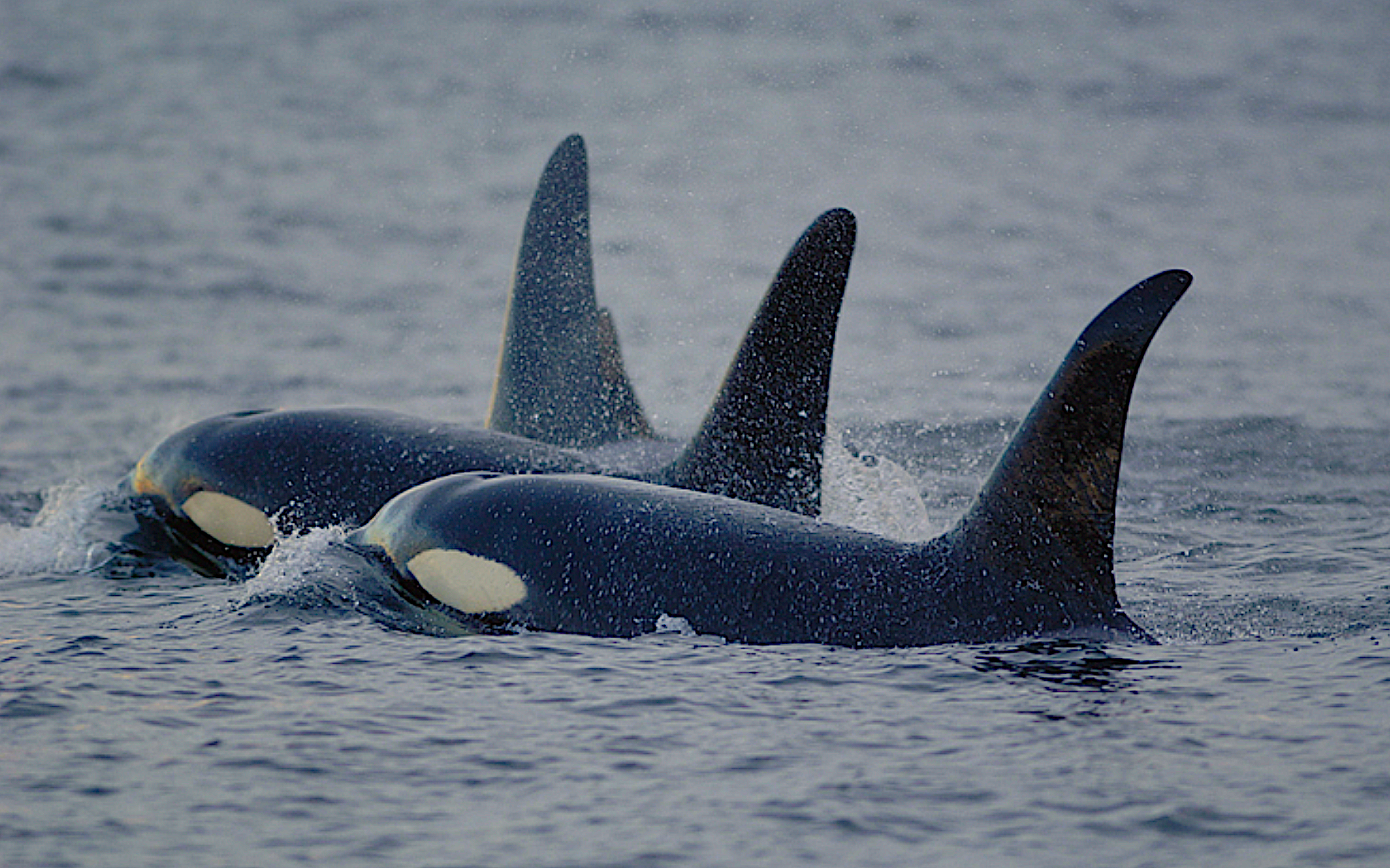Hatteras’ Changing Waterfront: Fishing Traditions, Boat Slips Dwindling

As David Gaskins gazes out on the Hatteras waterfront, he recalls a time when he and his fishing crew would pull in haul seines loaded with thousands of pounds of gray trout.
The crew would load the catch on the beach with a large truck, according to Gaskins.
“This was in the late 1980s and the most gray trout fish I had ever seen,” says Gaskins while showing an old photo. “It looked like a black spot in the net with all the fish.”
Today, he doesn’t know of anyone on Hatteras Island who uses a haul seine because it is so time-consuming to pull in a long net with a boat and also results in a high mortality rate for fish. Now, commercial fishers use gill nets to fish for gray trout.
Haul seining is just one tradition vanishing from the Hatteras waterfront. Other changes include the decline of boat slips for commercial watermen.
“During the last 25 years, more than 100 boat slips have been lost to private developers,” according to Lynne Foster, an organizer for “Day at the Docks: A Celebration of Hatteras Island Watermen.”
Commercial fishing captains are now competing for the remaining 50 slips left in Hatteras — a tiny community on the southern end of Hatteras Island, which stretches 60 miles from Oregon to Hatteras inlets. The island also includes the small communities of Rodanthe, Waves, Salvo, Avon, Buxton and Frisco.
Some of the docks in Hatteras are at fish houses, which have declined — from six to two — in recent years.
“Without the fish houses, there’ll be no commercial fishing industry here,” says Susan West, a member of the N.C. Joint Legislative Commission on Seafood and Aquaculture and wife of a commercial fisherman. “There’ll be no place for fishermen to dock or unload the catch.”
There is only one public slip for recreational and charter boats on Hatteras Island — in the middle of the Hatteras Harbor Marina. “Even if fishermen could afford to buy a slip at a marina, the logistics of marketing would be difficult,” says West.
Developing special markets for thousands of pounds of croaker or Spanish mackerel just wouldn’t work, she adds. “Many of our important fisheries are based on volume.”
WATERFRONT RESOLUTION
In May, the Dare County Board of Commissioners passed a resolution petitioning the N.C. General Assembly to establish “present-use” assessment and taxation of waterfront land that is used for commercial fishing activities. Property owners would apply to pay lower taxes through a proposed program like one in place for agriculture, horticulture and forests in North Carolina.
“We are asking the General Assembly to give tax breaks to fishermen like they do for farmers,” says Dare County Commissioner Allen Bums, who introduced the resolution. “We want to save what waterfront is left.”
The commissioners also set up a Working Waterfront Committee for Dare County.
“The Dare County Board of Commissioners would like to have the first right of refusal and be able to buy waterfront property so that property remains used in a traditional way,” Burns says.
Legislation in the General Assembly would establish working waterfronts across the state as a special class of property subject to present-use value for local property taxes.
COLORFUL HERITAGE
The Hatteras community’s history dates back to a violent gale that opened the current Hatteras Inlet, along with Oregon Inlet, on Sept. 7, 1846. “The new Hatteras Inlet was a strategic connection between the Atlantic Ocean and the Pamlico Sound,” according to the “ICW.Net/Coastal Guide,” a tourism site that focuses on coastal North Carolina. “A fishing and shipping village arose near the inlet.”
Twelve years later, a post office was established at Hatteras.
With the onset of the Civil War, the Hatteras area fell to Union forces in 1861. That same year, the fall of the Confederate’s Fort Clark and Fort Hatteras resulted in the loss of the inlet for Confederate use.
After the war, the Hatteras community began to grow. In 1878, the Durants Lifesaving Station was built. By the turn of the 20th century, a station for the U.S. Weather Service was constructed in the middle of the village.
A turning point for the commercial fishing fleet was when the U.S. Army Corps of Engineers dredged a channel in the mid-1930s, allowing better access from the Pamlico Sound to Hatteras Inlet.
“Before the harbor was cut for deep-water boats, there was nothing but small boats here,” says Eph O’Neal, an island resident who still fishes at age 86.
CHARTER FISHING
In the heart of the Depression, Ernal Foster and his brother, Bill Foster, took a gamble. They had the first sportfishing boat built in Hatteras for recreational fishing groups, as well as commercial fishing. In April 1937, Foster launched the Albatross.
“My father decided to make charter fishing his first priority, and commercial fishing his second priority,” says Ernie Foster, who now manages the charter fleet. “He had four charter trips the first year.”
During World War II, Ernal Foster and others left the fishing business to join the armed services. At the time, the area became known as a “Torpedo Junction,” because of the heavy loss of ships by German submarine attacks.
Following World War n, a private ferry began operating across the inlet to connect Hatteras and Ocracoke islands. The state took over the ferry in 1957, and has continued its operation.
Throughout the 1950s, most men on the island made a living as fishermen or carpenters, according to O’Neal.
“My grandfather on my mother’s side was a carpenter,” he says. Everybody else in O’Neal’s family, including his father, worked the water.
During this time, the charter boat business began expanding in Hatteras.
“When my father caught the first 457-pound marlin on June 25, 1952, things changed here,” Foster says. Word spread quickly to the recreational fishing community about the charter service.
In 1953, Ernal Foster added a third boat to the charter fleet. The clients included prominent politicians such as Governors Robert Cherry and Luther Hodges.
“There were six or seven charter boats in the 1950s that came out of Hatteras,” says Foster.
The waterfront also featured an ice plant, several fish houses and other businesses. “The ice plant had blocks of ice that weighed 300 pounds,” says O’Neal.
Another milestone was the completion of N.C. 12 along the entire island in 1963, making the villages more accessible for tourists. After that, many motels and new businesses were built.
COMMERCIAL FISHING
From the 1960s through the 1980s, more charter boat businesses started up, and commercial fishing also flourished.
Because of the island’s unique location near the Continental Shelf, it became a popular spot for recreational and commercial fishermen.
The area is a bottleneck for many migrating fish, says Dan Oden, owner of Oden’s Dock.
“We are at the northern migration of southern fish and the end of migration for northern fish in the winter,” says Oden. “We get to fish here year-round.”
During the busy winter months, gray trout bunch together and migrate to Hatteras. For the fishing fleets, this is a season of long nights and hard work.
The winter of 1984-85 proved to be one of the richest seasons to date for the drop net fleet, according to Jan Deblieu’s article in David Stick’s An Outer Banks Reader.
“By December 1, 1985, ninety-nine of the boats in Hatteras Harbor were rigged with hydraulic reels and gills nets,” she writes. “With so many fishing crews, any cooperative spirit disappeared.”
“Offshore, the boats kept each other in sight, watching and waiting until a captain ran across a school of fish,” she continues. “As soon as one boat began to feed out a net, four or five others crowded around, sometimes setting their rigs so close that the currents would sweep them together and a single trout would be caught in two nets.”
In recent years, the number of crews fishing for gray trout and other fish has dropped.
“When I first started 16 years ago, we packed for 67 fishermen,” says Tilman Gray, owner of Avon Seafood. “Now we deal with about 20 to 25 fishermen on a regular basis.” Some of the decline is due to retirement or fishermen dying off, he adds. “There are no young people getting into the fishing industry.”
Because the Hatteras community is so tiny, most commercial and charter captains know each other on a first-name basis.
Depending on the weather, they often gather early in the morning at Oden’s Dock that is on the bottom floor of a building that overlooks the waterfront. The Breakwater Restaurant sits atop the store.
“If it is windy or rough, people stay here for a while,” says Oden.
The store is packed with fishing gear, food and other items. On the walls, mounted fish gaze at customers, and a “Fishing Primer” reminds avid anglers to “pray to live to fish until their dying day.”
POPULAR SPOT TODAY
Early one fall morning, several men sit in the back of the store around a stainless steel table. While drinking coffee and munching on pastries, they trade fishing stories and catch up on local news.
“I get in my fusion of life and coffee here,” says Chris Hickman, a Hatteras commercial fisherman who has been working the water for nearly 30 years. “I fish from here to New Hampshire.”
Hickman has made this part of his routine since moving to Hatteras many years ago. “Hatteras is one of the best places to be accepted,” says Hickman. “I grew up on the Eastern Shore of Virginia. It is more clanish there.”
Whether someone has a small skiff or a large charter, they are accepted along the docks. “We don’t discriminate among boats here,” says Hickman.
O’Neal usually joins the group. Often, he spins tales about bygone days.
“I am a jack of all trades and a master of none,” jokes O’Neal, while mingling at Oden’s. “It is easier to tell a story than to tell the truth.”
On a serious note, he says he misses the freedom that he used to have in the village and the close-knit community. “Neighbors were friends, and friends were neighbors. You only have a small amount of that now.”
Less than a hundred yards from Oden’s, a young man washes down one of the sportfishing boats in the Albatross fleet.
Inside, Ernie Foster answers a customer’s call for a fishing trip. He is surrounded by black-and-white photos that date back to the early days of his family’s charter fleet.
One is of his father with one of the first sailfish caught in Hatteras in 1940. Another shows his grandfather, Capt. Charlie Foster who was a menhaden fisherman, in 1951. A third photo shows a proud group of recreational anglers with channel bass and dolphin caught in 1940.
Throughout the small office are memorabilia from early fishing days, including a radio finder, old fish hook, a feather jig used before nylon, and one of his father’s rod-n-reels.
“Charter fishing has changed dramatically since my father started,” says Foster, who started helping his dad as a young boy.
“Now, there are fast boats and great electronics. It used to take two hours in the 1950s and 1960s to get to the Gulf Stream. Now, a fast boat can make it there in an hour from Hatteras.”
For Foster, sportfishing offers diversity and immediate feedback for his customers.
“You get to see dramatic events — from storms to predators and prey,” he says. “I have seen a shark eating a fish next to the boat, a 400-pound marlin chase down a 25-pound dolphin, and a tuna chase down a flying fish. Though this is normal occurrence in the ocean, the average person is not used to seeing this.”
LOADING CATCH
During the afternoon, a few people gather around the docks at Avon Seafood to watch Gaskins bring in his catch.
As a seagull perches on a dock post, Gaskins — dressed in bright orange rubber overalls, a T-shirt and knee-high rubber boots — ties up his boat that is packed with gill nets, gear and flounder.
“It wasn’t too bad,” yells Gaskins to a man on the dock. “But we had a bad thunderstorm. Will probably go back out today.”
While unloading two baskets of fish on the dock, he washes off his arms and chats with another boater.
As Gaskins steps onto the dock, Tony Burbank of Avon Seafood brings out a white scale to weigh the catch.
“I have been fishing out here for 40 years,” says Gaskins. “I started fishing with my dad when I was 6 or 7.” Then with gloves on their hands, Gaskins and Burbank put the flounder on the culling table and onto a conveyor belt. After the fish move down the belt, Burbank weighs each piece of flounder. A man sorts the fish by size — jumbo and medium — and places the flounder in boxes packed with ice.
Then the men sort and weigh the drum and bluefish. Finally, they move all the boxes into a refrigerated area.
“Our fish goes everywhere from the Fulton Fish Market in New York to across the Pamlico Sound,” says Burbank.
Gray hopes that commercial fishing in the area will continue to have a strong presence in markets across the East Coast.
Even though many traditions are disappearing along the waterfront, the commercial fishing industry is still bringing in money, says Gray. “We are a year-round industry. All the money from commercial fishing stays here.”
This article was published in the High Season 2006 issue of Coastwatch.
For contact information and reprint requests, visit ncseagrant.ncsu.edu/coastwatch/contact/.


